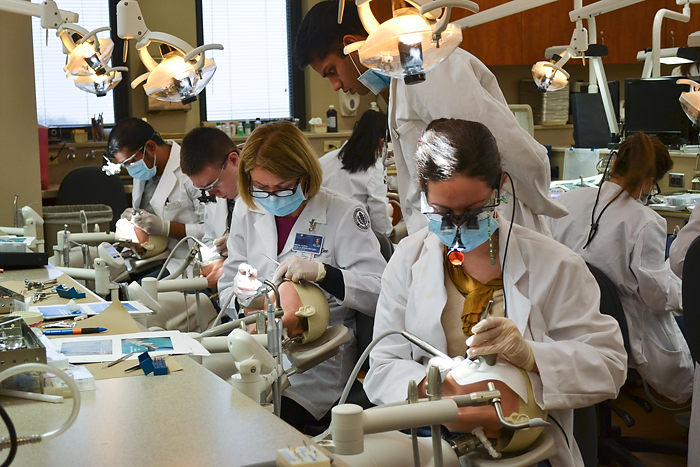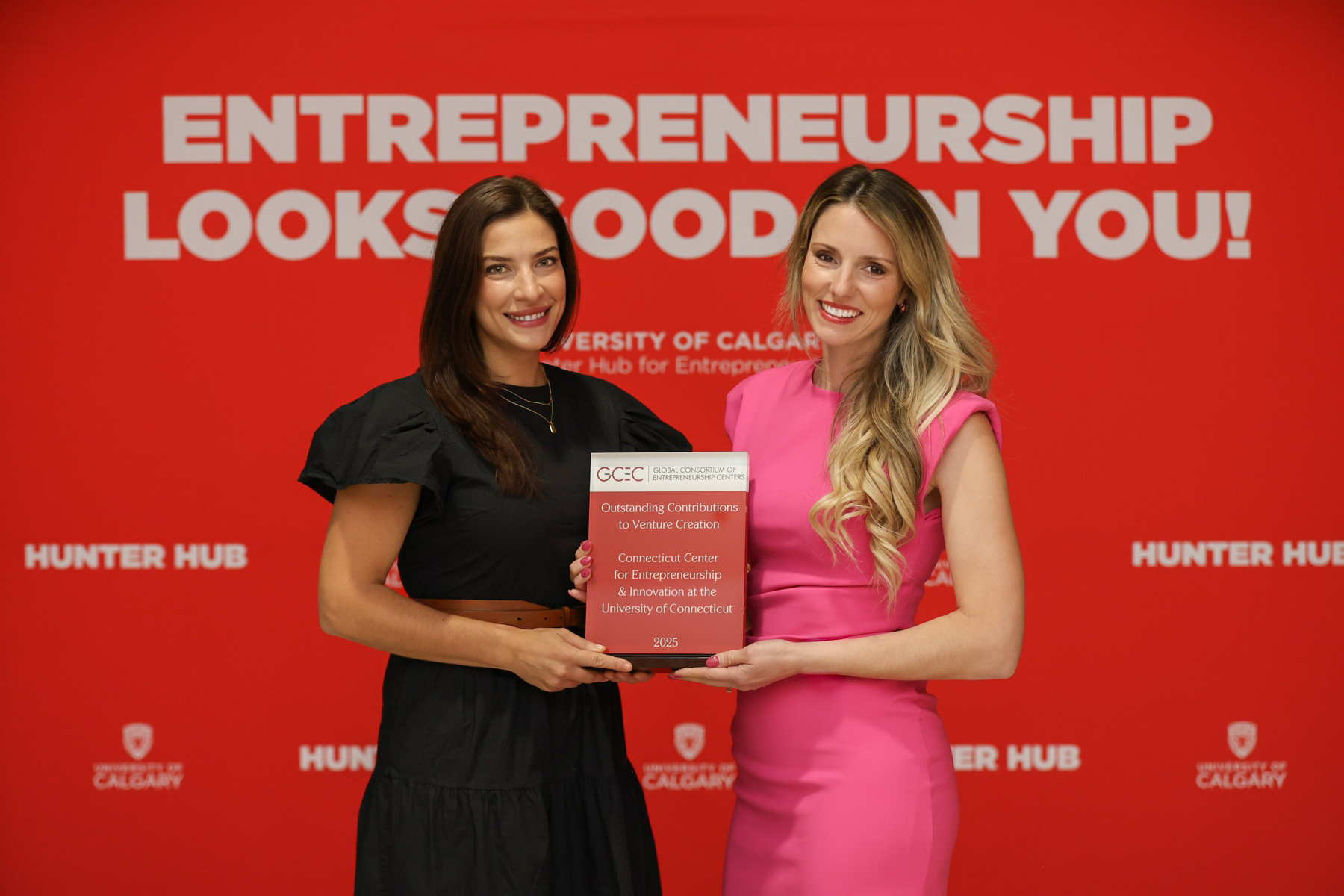
Dr. R. Lamont MacNeil, dean of the University of Connecticut School of Dental Medicine, explains how his school will grow as Bioscience Connecticut evolves.
It’s a great renewal period for the School of Dental Medicine Center. We are in our 40th year of training dentists and dental specialists and it’s been a very good run, in an academic sense. We now have a unique opportunity, thanks to Bioscience Connecticut, to retool and refine our focus and strengths.
The renewal will be seen in three distinct areas: our faculty, our science and our facility.
Our Faculty: Our faculty will always be the core of our educational programs. Fortunately, Bioscience Connecticut will provide us with new faculty recruits. Those hires will allow us to look at new areas or, alternatively, to build on our current strengths. Within this, we’ll also address those additional teaching needs that occur with the expansion of our DMD class size. The reality in our school, however, is that most of our faculty are involved in research, to some degree, and are not exclusively teachers, clinicians or researchers. So, these recruitments will have an impact on all of these areas.
I think we have a good plan for where our emphasis areas will be. Our faculty have looked at this in terms of those areas that fit our current strengths but that also show great promise, literally from the bench to the clinic. The arrival of The Jackson Laboratory on our campus is a part of this and, I think, a real game changer; the addition of those scientists gives us a new dimension that aligns very well with many of the things our faculty are interested in.
Our Science: We believe that the areas of genomics, biomedical engineering and health disparities are particularly good areas for us to focus on as we look to the future. Biomedical engineering is one of the fasting growing sciences and the university has just approved the formation of a new across-campus department that will be within three schools: Engineering, Medicine and Dental Medicine. It’s not difficult to see how our individual strengths will thrive along with those of Engineering and Medicine, especially with our expertise in biomaterials and cell biology. Genomics, in the broader sense, will certainly be a focus and fits so well with our unique strengths in the areas of inflammation, microbiology, cancer biology and tissue repair and regeneration. Our faculty participated in the Genomics Symposium sponsored by the University and the Jackson Lab last fall and we are already seeing collaboration with Jackson faculty that is resulting in new projects and grants. And we’ve always had a high degree of engagement in community health and health equity, which I think has even more potential as the concept of a Health Disparities Institute within Bioscience Connecticut moves forward.
Our Physical Renewal: We’re going to see a renewal of almost our entire current footprint. We’ve already upgraded our preclinical teaching area and the next project is an entire gut-and-renovation of research space on the 6th and 7th floors of the L- or laboratory building. Those labs are going to be truly state of the art and something deserving of the faculty and the type of work we accomplish in our research mission. After that, we’ll remodel our faculty and administrative space in the L-Building, while at same time creating a new academic space or wing for teaching of dental and medical students. And it does not stop there. Our clinical renovation is slated to begin in 2015. Ultimately, we’ll have a footprint that better fits what we do now, and what we hope to do for the next 20 years.
Explain what the physical changes to the campus mean for your clinical areas?
In 2015, we’ll start renovations in the current building where we have our clinics; we call this the C-Building. This will include the area that now encompasses the Neag Comprehensive Cancer Center and some other medical services. We’ll be assuming additional space in the C building and initiating a total renovation and expansion project within that area. In my view, this is perhaps the best real estate on the campus: it is the current front door to the hospital, will have its own parking garage and is contiguous with our preclinical teaching areas and where most of our faculty work and reside. We will be increasing our total square footage and this will likely mean that our clinical operations will expand from the 1st floor where they are now to the Main Floor. We are all looking forward to the opportunity to define our own entrance and our brand, so to speak, as people enter the building and encounter what we are at this point calling an Oral Health and Care Center.
The expansion of our clinical area is part of the total effort in expanding from 40 DMD students per class to 52 students. The school was originally planned around a smaller class size, and then we added quite a few residency programs specialty programs along the way which has really maximized our space. Our facility project now allows us to right-size the school for all of its programs, including the future ones.
When there were national rankings for dental schools, UConn historically was always among the tops in the country, and it continues to be very highly regarded nationally. How much more room for improvement is there?
Nationally, all schools are improving, so it is important for us to do so as well, and that is what we are doing here. I think it’s important to recognize that even increasing from an average class size of 40 students to 52, we’re still going to be within the smallest five schools in the country. That’s a great class size for teaching and mentoring; we really get to know out students here and that personal touch adds to our academic product and outcomes. That is also a very good number for Connecticut; it addresses the dental workforce needs of a state that seeks excellent health care.
One of the great long-term missions of Bioscience Connecticut is for this institution to grow the talent pool so there are more practitioners available to serve the Connecticut population. Based on the anticipated needs, you think growing the class by 12 a year will meet that?
The dental care story in Connecticut is actually a very good one. Part of our role as a state-related dental school is to ensure it remains that way or improves further. On average, year to year, about 50 percent of our graduates stay in Connecticut, and our class size is in part determined by that. In terms of our dentist-to-population ratio, which is a measure of dental care capacity, Connecticut is in the top 10 most favorable in the United States. We have studied population trends and the retirement trend of the dental workforce in Connecticut, and we think the class expansion is well proportioned and will have lasting benefit to the state and the dental community. The ultimate goal in all of this is that is that we address the needs of our state and I think we are doing that within our Bioscience plans.
When does the first class of 52 start?
The first larger class will start in the fall of 2016. That increase has to be coordinated with the School of Medicine class, because our classes are combined in the first two years. It’s likely that Medicine will increase its class first, and then we’ll follow. Our key timing in this is that our facility has be ready before a larger third-year class matriculates. That means that we’ll be accepted a larger class in 2016 and by 2018 we’ll have a larger clinical facility to accommodate that class as it begins patient care activities.
What is the big-picture view of the curriculum once this starts happening?
Bioscience Connecticut came along at a perfect time for us, because we were ready to make a major change in our clinical curriculum – the way dental students are trained in their third- and fourth-year inpatient rotations. We’re now looking at a very different format for that training. We’re currently piloting a comprehensive care approach where we have fourth-year students, general practice residents and faculty together in the care of patients. It’s more like the medical model of training where providers of different levels work together in teams with different individual responsibilities. We call this experiment CONNcept, for Connecticut comprehensive education and practice team. The CONNcept model is developing at a critical time for us and will help us shape our clinical direction in future.
How do you foresee the expansion of your school affecting admission standards?
I see no major change there. We’re one of the toughest schools to enter right now, if not the toughest. Bioscience Connecticut will give us a facility, faculty and program that will attract the special type of student we seek out here. Last year, we extended offers to the top 80 students from the 1,200 who applied and the 200 we interviewed. From those 80 offers, we secured our class of 40. That’s quite exceptional and speaks strongly to the fact that students want to come here and see us one of their best options for dental education. That’s the type of success that we want to sustain going forward and Bioscience Connecticut will be part of that story.
Are you aware of any success stories from other schools that have undergone a project such as Bioscience Connecticut, and how it’s worked out for them five or 10 years later?
There’s not a project that’s as dynamic as this in the country right now. This scale of building and expansion is not happening anywhere else in the country to my knowledge. And this is more than a building project; it is also about programs, education and community. Again, the addition of a partner like Jackson Lab to this expansion and renewal project is very unique and really sets us apart.
Follow the UConn Health Center on Facebook, Twitter and YouTube.



